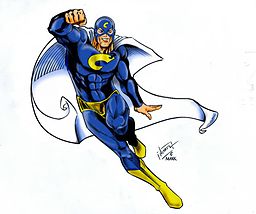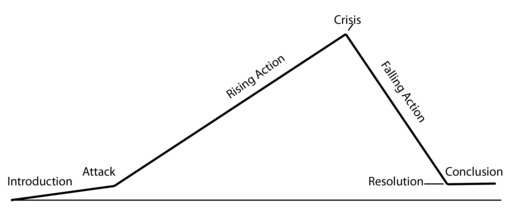Welcome to the last of our Summer SciComm Series! We hope you've enjoyed this small glimpse into the world of science communication and can use what you've learned to share your science with others.
My favorite quote about science ever comes from an interview in which someone laughed and said, “Science is failing over and over and over again until you don’t.” As every researcher can attest to, science is nothing if not solving your way through a series of obstacles in pursuit of achieving knowledge. Or, as we in the storytelling business like to say, science is all about navigating conflict.
In literary terms, conflict can be defined as (1) the struggle between two opposing forces or (2) the result of competing desires or (3) the presence of obstacles that need to be overcome. Conflict, and its inherent tension, is interesting. It’s what drives a story forward - and this drive is so powerful that it can entice an audience to come along on a journey even when they know the ending.
 |
| Fig. 1: We all know that the superheroes win in the end. But we’re still invested in seeing how they do it. |
Finding Conflict in Science
In all science communication, what you are doing is telling a (nonfiction) story. For there to be a story, you need to have conflict. There are a lot of ways to introduce conflict into your work, but one of my favorite is to find it within the science itself - within that process of failing, over and over again until you don't, of trying to understand your completely unexpected findings, or understanding why your experiment has not worked…again…for the seventh time….
I find that once I sit down and talk to a scientist about their research, these conflicts come out quite naturally as they explain their work. That was the result of having to work around a thrice-failed experiment, this paper was actually from a completely unexpected finding in a different experiment, this tool was developed because a project suddenly couldn’t progress without it… These details often aren’t included in scientific communications, but they’re firmly part of the story to the scientists doing the work.
And while these pieces aren't always appropriate for your formal scientific communications, they are fantastic fodder for science communication. The trick is to find one or two roadblocks that sparked creativity, changed the outcome of the project, or illustrates the value of the work and then build a story around them. A good rule of thumb is to find the pieces that make you think, “Oh, that’s interesting! How did you solve that problem?” Those are the conflicts that will drive your story forward.
Beyond the Conflict
Once you have your conflict, you’ll need two other things to complete your story: an introduction, and a resolution.
 |
| Fig. 2: The structure of a story - not just for fiction! Image credit: Kenneth Rowe, under the creative commons license. |
The introduction
The introduction serves two purposes. First, it should “hook” your audience in with something that sparks their interest and makes them want to know more. This could be by outright stating the big-picture problem, by asking your audience a simple question, like “Have you ever thought about how X works?”, or even by introducing a person that the audience can relate to. It doesn’t need to be anything fancy; it just needs to capture your audience’s attention enough to make them decide to read (or listen or watch) further.
Second, the introduction needs to provide enough information so that the audience can understand the conflict. A science-based conflict gives you an easy framework with which to communicate your science. The act of building towards your conflict (your scientific problem) will also help you determine what information is necessary and what can be left out, which can be a big challenge!
The resolution
Throughout your conflict, you’re encouraging your audience to ask questions. Why didn’t the experiment work? What did those odd results mean? How did the researchers solve the problem preventing them from moving forward? Answering these questions will bring you and your audience - via the scientific method - to the resolution, or the ending of the story.
At this point you may be thinking “I don’t want to bury my results all the way at the bottom of my story” and that’s a very valid critique! But do you remember earlier when I said that even when we know the ending, we can still get invested in the journey? The same thing applies for science storytelling. You can introduce your results right at the beginning of your communication, use conflict to get your audience invested in the more complex story, and then build on that in your resolution to really dig into the significance of the results, explaining what new questions are next or how this will impact future research or policy.
It is worth mentioning that this is far from the only way to communication science. Science communicators also use the hero’s journey, stories from patients or other affected people, man/animal vs nature, anthropomorphized animals, or even seemingly unrelated stories that they then tuck the science into. There are almost limitless storytelling options, and they all can be effective in the right circumstances.
However, in the midst of all these storytelling devices, we sometimes forget the most important thing about science: It’s cool. Like bowties! Using science as the conflict and driver of your story gives your audience a chance to get curious and invested in the research itself - and isn’t that sense of curiosity and wonder why you’re doing and sharing science in the first place?
References and Resources
More resources on the Addgene blog
Topics: Science Communication





Leave a Comment